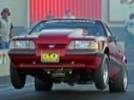Post by moramarth on Jun 18, 2019 23:55:28 GMT -7
As a long-time fan of all things Post-Apocalyptic I had hoped that the July LMS theme might finally get me back in the game, but sadly it hasn't been so. Surveying several part-started abandoned projects I couldn't find one that I wanted to revive, and the only thing on the shelf that fits the description doesn't actually qualify for LMS. This is because of the requirement for five photos:
"Include 5 pictures of the following angles:
Side/front (Yep)
Side/rear (O.K.)
Engine (It doesn't have one)
Chassis (It doesn't have one of those either)
Interior (Guess what it's not got...) "
Basically, it was designed for wargaming with 28mm scale figures (the old "Heroic 28mm" stuff, the current "True 28mm" having not been invented at the time) and therefore scales out at approximately 1/56th... It's pretty much cast in one big lump of rather nasty resin machine-sanded flat on the bottom, hence the lack of requisite chassis (and interior, and motor).
The rest of this post is basically a rehash of one I made on the Modeller's Social Club Post Apocalyptic Group Build Board five years ago, so if (like Leon) you've seen it there you're excused repeating what could be a depressing experience.
Many years ago when the world was young and Grenadier hadn't gone to the wall I purchased from them one of these:

a couple of these:

these two fellows:

(not to mention another figure from another defunct manufacturer), added some plastic rod, strip, and scraps, a couple of staples, mixed vigorously and this came out:


The hardest bit was replacing the spare wheel; actually, removing the cast-on item – the resin used was a sort best used for reproducing buildings, a bit like a very tough Plaster-of-Paris with a rough surface. The replacement was produced by some warm Plasticine flat, dusting it with talcum powder, and pressing one of the big wheels on the replacement axles in several times to a bit more than it's half-way mark. The mould so formed was consigned to the refrigerator for a while until it became rather hard. It was then possible to stuff Milliput into the holes. The results were crude but adequate for my purposes, the two best were selected, sanded down to the half-way depth and glued back-to-back.
As the machine was a bit further off the ground, I added a couple of driveshafts and a tie-rod to the front axle, and staples for steps below the cab doors. I used some plastic rod for rails round the bed and for the frame for the “hood ornament”.
Job done...
The photographs were only taken a couple of years ago, so by that time the thing was well dusty, and despite a good brushing some of the dust was well ingrained (it's also in the base flock, which is why it's an odd colour).
Regards,
M
____________________________________________________________________________
"Include 5 pictures of the following angles:
Side/front (Yep)
Side/rear (O.K.)
Engine (It doesn't have one)
Chassis (It doesn't have one of those either)
Interior (Guess what it's not got...) "
I thought I'd post it anyhow in the hope it might persuade some more participants to try their hand over the remaining days knowing whatever they churn out can't be as bad...
The rest of this post is basically a rehash of one I made on the Modeller's Social Club Post Apocalyptic Group Build Board five years ago, so if (like Leon) you've seen it there you're excused repeating what could be a depressing experience.
Many years ago when the world was young and Grenadier hadn't gone to the wall I purchased from them one of these:

a couple of these:

these two fellows:

(not to mention another figure from another defunct manufacturer), added some plastic rod, strip, and scraps, a couple of staples, mixed vigorously and this came out:


The hardest bit was replacing the spare wheel; actually, removing the cast-on item – the resin used was a sort best used for reproducing buildings, a bit like a very tough Plaster-of-Paris with a rough surface. The replacement was produced by some warm Plasticine flat, dusting it with talcum powder, and pressing one of the big wheels on the replacement axles in several times to a bit more than it's half-way mark. The mould so formed was consigned to the refrigerator for a while until it became rather hard. It was then possible to stuff Milliput into the holes. The results were crude but adequate for my purposes, the two best were selected, sanded down to the half-way depth and glued back-to-back.
As the machine was a bit further off the ground, I added a couple of driveshafts and a tie-rod to the front axle, and staples for steps below the cab doors. I used some plastic rod for rails round the bed and for the frame for the “hood ornament”.
Job done...
The photographs were only taken a couple of years ago, so by that time the thing was well dusty, and despite a good brushing some of the dust was well ingrained (it's also in the base flock, which is why it's an odd colour).
Regards,
M
____________________________________________________________________________




 ).
).